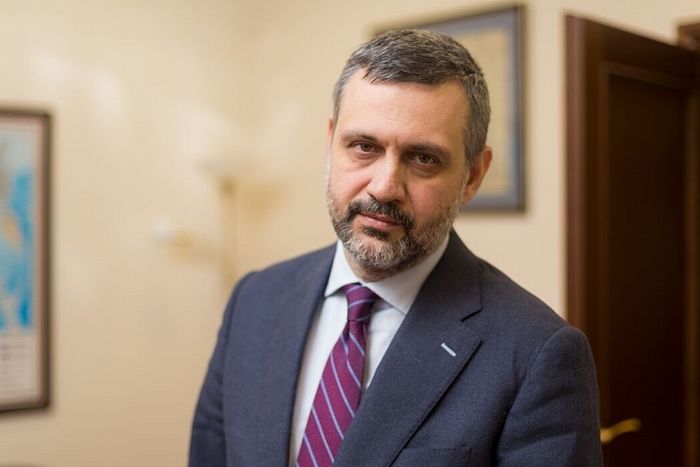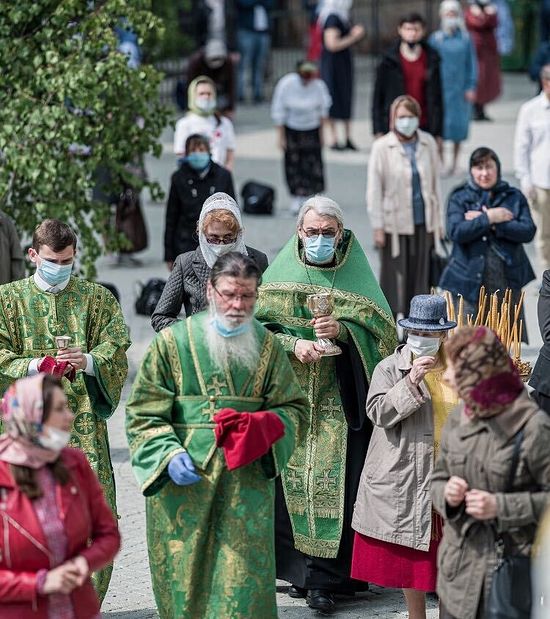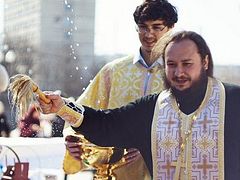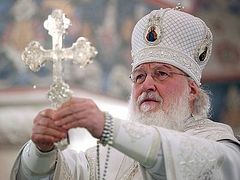Not to kiss the cross, to use gloves and observe social distancing—these rules are in force in the Russian Orthodox Church now. On June 3, 2020, churches of the Moscow region were opened for parishioners after an enforced lockdown caused by the coronavirus pandemic. What changes did the Church have to make due to the epidemic? Vladimir Legoida, Chairman of the Synodal Department for Church's Relations with Society and Mass Media, in his interview with the Federal News Agency spoke in detail about how churches are working after reopening for the laity after the lockdown.
—Today [June 6] churches of the Moscow region have opened their doors to parishioners again. What safety measures are being taken to prevent the spread of the coronavirus infection?
—On reopening access to churches will be provided in accordance with all the health and epidemiological regulations of The Federal Service for Surveillance on Consumer Rights Protection and Human Wellbeing (Rospotrebnadzor), including such health requirements during services as four square meters of space per person. As early as March 17, His Holiness Patriarch Kirill of Moscow and All Russia approved the rules in connection with the threat of the spread of the coronavirus infection. The text contains the regulations that take into account the canonical and liturgical tradition of the Russian Orthodox Church, which are observed and will be observed until the epidemiological situation improves.
—How has the celebration of religious rites changed because of the epidemic?
—The Church sacraments always remain unaltered, and the pandemic won’t be able to change their nature. The temporary measures that have been taken now will by no means change the order of our liturgical life.
—How will the rite of the Eucharist be conducted now, for example?
—The mentioned guidance has a list of specific instructions on the administration of the sacraments during the coronavirus pandemic. Specifically, it says that offering the Bloodless Sacrifice cannot in any way be cancelled. For where there is no Eucharist there is no Church life; and the Holy Body and Blood of Christ are offered for the health of both soul and body. Taking into account the Orthodox Church’s historical practice adopted in epidemics, the Holy Gifts of Christ should be distributed which one spoon, which should be wiped after each communicant with a cloth soaked in alcohol and then dipped in water to be used later according to the practice of washing cloths. The instructions are to distribute the “zapivka” [warm water with wine served to each communicant after communion] only individually and separately to each communicant in a disposable cup. In distributing antidoron, the use of disposable gloves is recommended. <…> To wipe the lips of each individual communicant, paper tissues should be used and then burned. <…> Communicants should temporarily refrain from kissing the chalice.
—Has the Church formulated its position on kissing the cross and icons by parishioners until the threat of contamination by the virus has faded?
—Instead of giving the cross to kiss after the Divine Liturgy and other services, the prescription is to touch the heads of parishioners with it. Besides, instructions are to regularly disinfect the icons in churches venerated by parishioners with disinfectant. I should note that even before the pandemic, the glass over icons, which worshippers often kiss, were regularly disinfected.
—The laity couldn’t attend churches for a long time. Did they seek counsel or psychological help online? What topics worried people most in this difficult time?
—During the pandemic, the “Mercy” Orthodox Charity Service has been actively helping coronavirus patients, their families and all those suffering from the epidemiological situation. There is a round-the-clock “Mercy” hot line—anyone can get psychological support, leave a request for help if they are in the risk group and have no one to deliver them food and essentials, or are in another emergency situation related to the coronavirus epidemic… Hot lines are active in other dioceses all over the country as well… Late in March, with the support of the Synodal Department for Church Relations with Society and Mass Media, the “Odnoklassniki” (OK.ru; meaning “Classmates”) Russian social network service launched a “Talk to a Priest” group. Now it has over 20,000 members. Ten priests answer calls online and stream live broadcasts. They have received over 5,000 calls to date. We can say for certain that people are in acute need of wise pastoral advice, peace, and the joy of the possibility of praying in their churches.
—Do you plan to continue this format of interacting with the faithful after the pandemic?
—The Church has interacted with people online for a long time; however, I am sure it does not replace and will never replace praying in church, talking to priests, to say nothing of the sacraments which are simply impossible without a living presence.
—Are there approximate dates for the reopening of churches in other regions?
—We are looking forward to the reopening of churches across the country. We are aware of the letter of May 23 by Anna Popova, Head of Rospotrebnadzor, to the federal service’s regional structures with the guidelines on what measures should be taken regarding the gradual lifting of restrictions on attending church in each of the three stages of exit from the lockdown. The Patriarchal working group has already discussed these measures with Rospotrebnadzor representatives and found them quite acceptable. By agreement with the local authorities each diocese will introduce these measures depending on the phase in their particular region. In some regions this process is underway, while in other regions the restrictions were not severe from the very beginning because of the local epidemiological situation.
—The feast of the Holy Trinity,1 on which the faithful by tradition flock to churches, is coming soon. Will churches open their doors to parishioners on that day?
—I will repeat that all depends on the epidemiological situation in each region and the decision of their health authorities. As I have said, access to churches will be provided in accordance with all the points of the instructions on the threat of the spread of the coronavirus infection, and, of course, in compliance with the health and epidemiological directions of Rospotrebnadzor. Patriarch Kirill has blessed opening of all churches of the Moscow (regional) Diocese for worshippers from this coming Saturday. The Cathedral of Christ the Savior and the Theophany Cathedral at Yelokhovo are already open again and all the health regulations are observed in them. Recently Metropolitan Juvenaly of Krutitsy and Kolomna said that the Moscow Regional Head Government Doctor, Olga Mikailova, had informed him about the first stage of lifting the restrictive measures in connection with COVID-19. According to this decision, parishioners are allowed to enter temples in the Moscow region between services, and services can be celebrated beside churches in the open provided that all the health rules are observed.






